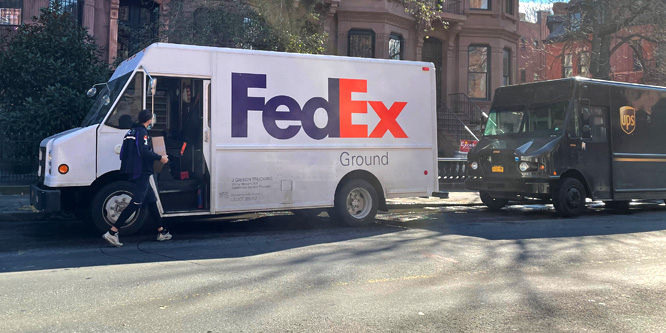
Photo: RetailWire
December 7, 2020
Can retailers avoid a late holiday delivery ‘apocalypse’?
With holiday shipping volumes typically 30 to 40 percent higher than at other times of the year, the pandemic-fueled acceleration of online purchases this season is already pushing distribution networks to the limit.
On Cyber Monday, UPS instructed drivers across the U.S. to temporarily stop picking up packages at six retailers — Macy’s, Nike, Gap, L.L. Bean, Hot Topic and New Egg — after their shipments exceeded volume agreements, according to The Wall Street Journal.
“The temporary limits, which some drivers say they haven’t seen during previous holiday seasons, are a sign that UPS is metering the flow of packages into its network to preserve its performance during one of the busiest shipping weeks of the year,” wrote the Journal’s Paul Ziobro.
UPS and rival FedEx have raised shipping fees, added surcharges for peak deliveries, encouraged retailers to spread out promotions earlier in the season and promised to strictly limit the number of packages retailers can send out each day to manage expected record online volume this year due to the pandemic.
The National Retail Federation reported last week that the number of online shoppers jumped 44 percent over the five-day Black Friday weekend as pandemic-related restrictions and fears stifled in-store shopping.
LateShipment.com predicts 20-to-25 percent of packages won’t arrive on time this holiday season, up from about nine-to-10 percent in recent years.
“It’s absolutely going to be a shipping apocalypse,” LateShipment.com’s CEO Sriram Sridhar told The Dallas Morning News.
Amazon.com, which already delivers about half of its own packages in the U.S., is seen having an advantage. Other retailers, particularly smaller ones, have minimal leverage against UPS and FedEx.
Retailers have an opportunity instead to maximize use of the pickup options that they have been expanded during the pandemic.
For online orders, early cutoff dates are another option for retailers. Abercrombie & Fitch is insisting that shoppers order by December 4 for Christmas delivery at standard shipping rates. Most others have set their free-shipping cut-off around mid-December. Instacart, Shipt and other third-party delivery platforms may be an available yet expensive last-minute option.
[Update: An Abercrombie & Fitch spokesperson reached out to inform RetailWire that its cutoff date has been extended past Dec. 4. The spokesperson said in an email, “We continue to monitor the shipping situation very closely. Our strategy to increase distribution capacity and add regional parcel carriers is working and, because of that, we’ve recently extended the date that customers can order with standard shipping to receive by 12/24. The extension is for a limited period of time and with the fluid situation, customers should check the website before placing an order.”]
More loudly encouraging early orders is another ploy. A West Elm email to customers read: “The postal services are predicting one of the busiest shipping seasons ever. To ensure your items arrive on time, we encourage you to place your orders extra early.”
- UPS Slaps Shipping Limits on Gap, Nike to Manage E-Commerce Surge – The Wall Street Journal
- With 3 Billion Packages to Go, Online Shopping Faces Tough Holiday Test – The New York Times
- Holiday Shoppers Take Advantage of Early, Thanksgiving Weekend Deals – National Retail Federation
- Shipping delays are expected to surge – The Dallas Morning News
- UPS places shipping limits on some retailers as holiday shopping heats up, report says – CNBC
Discussion Questions
DISCUSSION QUESTIONS: What options do retailers have left to best manage expected shipping capacity constraints over the rest of the holiday season? What messaging to customers may help manage the risks?
Poll
BrainTrust
Ron Margulis
Managing Director, RAM Communications
Brian Cluster
Insights Consultant
Brandon Rael
Strategy & Operations Transformation Leader
Recent Discussions

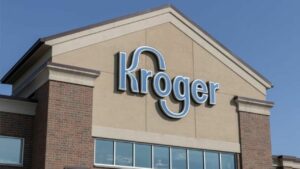
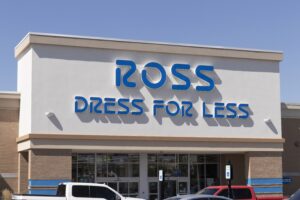

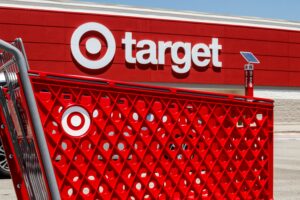
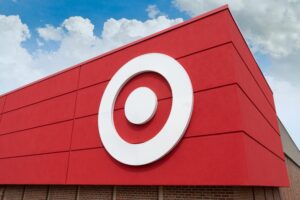

Given the sheer volume, shipping is going to be a Gong Show this year, and there’s not too much retailers can do about it. No doubt some consumers will still be disappointed no matter how much they pay for premium shipping fees. Retailers need to encourage shoppers to buy early and then be realistic about shipping options and expectations. And notwithstanding the pandemic restrictions, curbside pick up may be the most reliable option for getting your holiday goods.
Excellent comment! I have noticed the “special parking” at the entrances of a number of retailers, designed exclusively for “click and collect,” right at the entry. I’ve also noticed the RARE use of these spaces by shoppers, to actually “click and collect.” The investment, preparation, and inconveniencing of regular shopper-visitors is obvious. It’s hard to imagine this being anything but an occasional benefit/virtue-signaling by the retailer. It’s hard to beat the actual in-store experience, largely managed by the shoppers’ subconsciouses, for a very large share of their purchases. But then, that’s a whole ‘nuther story! 😉
Transparency and over-communication are key at this point. It’s one thing to disappoint a shopper while in the store or at online checkout, quite another for things to fall through after the sale. Retailers would also be wise to offer alternatives when capacity constraints hit. Offering incentives to pick up at a store (and noting a specific location) could save a sale. “Just in case” messaging that puts the burden on the shopper should be a last resort.
You’d think that by now the word would be out, and understood, that early shopping is your best friend — whether it be at the mall or your computer. But that is a new rule, a new behavior that will surely not be embraced by all. Just as there are pandemic deniers, there will be those that will default to prior year shopping habits. And just as surely there will be many delivery disappointments ahead. UPS has already thrown up the red flag. Shipping deadlines should loom large on all websites.
At this point if retailers have a brick-and-mortar footprint, they should be driving customers to curbside, click-and-collect — whatever it takes. With Hanukkah falling the week before Christmas, those two weeks will be slammed and there’s not much retailers can do about it. I predict Walmart and Target will be holiday winners, because they have widely distributed physical locations and they’ve been heavily pushing customers in this direction and redirecting shopping habits for the better part of this year.
As consumers we love the idea of having purchases delivered directly to our homes, yet most consumers don’t think about the supply chain and the challenges behind the scenes. It is going to be difficult. Fulfillment centers have to find, protect, and pay the people that will staff these centers. This is not going to be a smooth endeavor. Too many moving parts…
I know everyone is striving for a slice of normal this holiday season. Sorry, it’s not going to happen. Delays are inevitable. Some presents will not make it to their destinations on time. But in a year of near insanity, this will be among the least of consumers’ problems.
For retailers trying to soften the blow of products not arriving in time, consider a printable representation of the item that can be emailed in advance of the present. At least that will provide something under the Christmas tree or Chanukah bush.
Nothing has been normal about this year, and that’s not going to change now.
While Prime Day 2020 jumpstarted holiday sales in October, it didn’t cure last-minute shoppers. Options within retailers’ control include streamlining internal processes to boost e-commerce efficiency. They can immediately strike deals with new supply chain partners for last-mile speed. Also, a sense of urgency in retailers’ messaging could galvanize prompt consumption. Limited-time promotions, flash sales and exclusive deals – now! – could speed up online purchases.
Delays are inevitable this year – “shipageddon” is real! Encouraging early shopping, over-communicating about the situation, and finding alternative shipping and delivery methods are the rule of the day for retailers this holiday season!
As a Costco member, I’ve received multiple “alerts” via email and in their mobile app reminding me that shipping delays this season WILL happen for small packages (exceptions for bulky items, like furniture, are called out) unless you shop early. One email was a letter from Costco’s CEO. That level of over-communication is what every retailer should be striving for this holiday season.
For brick-and-mortar retailers, offering same-day delivery services may save the day for those late in the season shoppers, as will finding every means to encourage BOPIS and curbside pickup. Smaller retailers can’t count on UPS or FedEx accepting more orders than normal, so they need to seek out alternative providers and newer, smaller 3PL and 4PL services. USPS is already overloaded and won’t likely help alleviate the stress in the system very much. Most consumers have heard about this phenomenon this year, but I can’t over-emphasize the need for communication! Once an order is shipped to a customer, retailers need to add to their normal communication – especially if a delay is detected. Better to over-inform, as in any crisis management, than to risk disappointing your customer!
Let’s hope that customers have shopped early and planned ahead, and that those who didn’t are understanding of the delays. What a weird year!
The pandemic-fueled great acceleration has sparked the need for agility, speed, flexibility, and innovation to keep up with the rapid pace of change. Clearly the e-commerce acceleration has had downstream impacts on all retailers who are not Amazon, Walmart, Target, and Best Buy. The balance of the companies do have a dependency on FedEx, UPS, and the USPS, and even with Amazon vertically integrating most of their shipments, there is a significant backlog of shipments this holiday season.
This is where retailers could follow Target and Best Buy’s operating model of BOPIS to help mitigate the shipping backlog and enable consumers to get their products earlier. Local stores should also be leveraged as micro-fulfillment centers to ensure that holiday gifts arrive on time. Yet most consumers are savvy enough to have shopped earlier this year and avoid any last-minute disappointments when the shipping companies cannot meet their commitments.
This is an annual topic, although COVID-19 does change things a bit. While the pandemic has created a few surprises, we can’t really be that surprised with the number of online shoppers jumping to new highs. Setting dates makes perfect sense. Each week you can push these dates closer and closer to Christmas. The customer needs to understand why the retailer insists on early purchasers. Make it transparent. Educate the customer. Don’t over promise and under deliver. There’s no excuse for a shipping debacle this year.
Retailers who’ve invested in omnichannel technology have the ability to offer click and collect options (BOPIS and BOPAC), which increase customer convenience (reduce time in store) and speed up delivery (same-day pickup). To wean customers off home delivery, retailers need to introduce incentives that promote store pickup options (order discounts, loyalty programs, vouchers etc.) and also educate customers on the environmental impacts of home delivery.
This time of year second-tier, (e.g., smaller) logistics companies thrive by handling the overflow from the big delivery services companies. Also, the biggest online marketplace organization is increasing self-distribution to manage logistics capacity. I also believe shoppers’ expectations during the holidays are in line with reality for the most part.
I’m already experiencing delays and lost packages for items ordered well before Thanksgiving (one back in October!) The heroic efforts of the USPS to get ballots delivered may have burnt out their surge capacity, I fear…
‘Tis the time of year for data transparency. Retailers that have the ability to indicate timing to ship to home or another location vs. pickup should be communicating this to their customers. Additionally, if there is some flexibility in their data, it may also be helpful for an omnichannel retailer to show visibility of inventory on a high demand product that was available at another store location close by. Unfortunately, there will some shoppers waiting for the last minute and likely will be disappointed. Ultimately, if retailers communicate up front and meet those expectations then that is the best that they can do.
Given the tremendous increase in online orders, consumers are probably expecting a few delays. However, this is a great opportunity for brands and retailers to be proactive and set the right expectations regarding delivery timelines. Another way to encourage customers to opt for delivery alternatives such as BOPIS is to offer bonus loyalty points if they have a loyalty program OR offer discounts for picking a non-holiday delivery date.
Wait, wait: so we really can’t have everything fast and free and ordered at the last minute (sometimes quite literally)? Gee, life’s just so unfair!
Companies have been playing a game of “Double Dog Dare You” for years, one upping each other with (increasingly) outlandish promises in an effort get competitive advantage and in doing so, ignoring cost and feasibility. Perhaps this will be the year that everything comes crashing down; and if so, maybe there will be a silver lining in that people will (re) align their expectations with reality.
The current scenario suggests that retailers with physical shops (vs online only) will see a golden opportunity based on excess volume and clogging up of the delivery arteries, especially as it nears the actual holiday. There will be nervousness from customers who haven’t received their shipment a few days in advance of the expected online delivery date, or those who received an “I’m sorry your order has been delayed” email. Those retailers who are unable to deliver gifts (3rd party fault or not) on time will see customers driving to nearby stores to fulfill the needs.